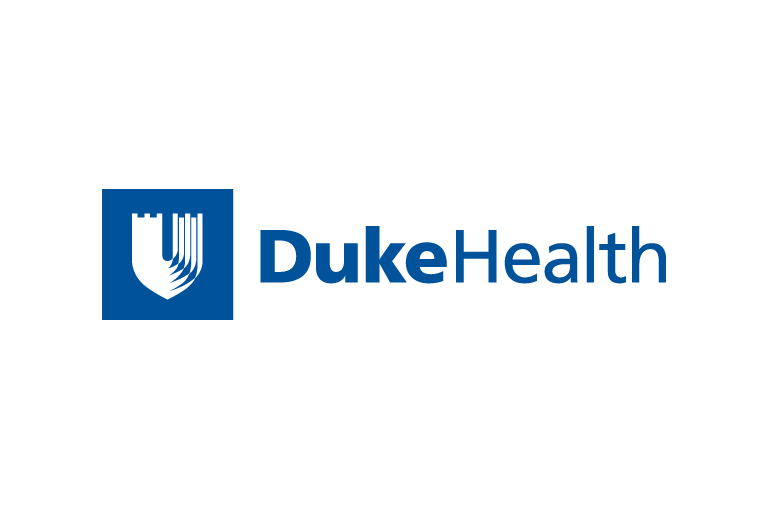Drug Proven to Benefit Heart Attack Victims Vastly Underused
 From the corporate.dukehealth.org archives. Content may be out of date.
From the corporate.dukehealth.org archives. Content may be out of date.
ORLANDO – After analyzing data of more than 56,000 U.S.
patients who arrive at emergency rooms with heart attack
symptoms, researchers from a Duke University Medical Center-led
patient registry have found that almost two out of three
patients did not receive a class of clot-inhibiting drugs
within the first 24 hours of symptoms, despite the fact that
clinical trials that have proven that the drugs save lives.
The drugs in question, known as glycoprotein (GP) IIb/IIIa
inhibitors, are agents that block receptors on blood platelets
preventing them from forming clots. Large multi-center trials
have proven the inhibitors' effectiveness in preventing deaths
in patients with chest pain if administered within 24 hours of
being seen in the hospital.
The scientists' analysis of current hospital practices in
the U.S. also revealed that other proven drug therapies, as
well as the early treatment by a cardiologist and the
aggressive use of invasive procedures such as angioplasty, are
also underutilized. Improving the usage of all these
evidence-based therapies can help reduce the mortality rates
for these patients, the researchers said.
The results of the current analysis were presented today by
James Hoekstra, M.D., chairman of the department of emergency
medicine at Wake Forest University School of Medicine,
Winston-Salem, N.C., at the 76th annual scientific session of
the American Heart Association.
"Acting quickly with therapies that have been shown to be
effective can save lives," Hoekstra said. "The ultimate goal
for improving patient outcome is to use protocol-driven care.
If we stick with the guidelines and utilize all the proven
therapies within the first 24 hours, our patients will do
better."
For their analysis, the Duke team consulted the nationwide
quality improvement initiative dubbed CRUSADE (Can Rapid Risk
Stratification of Unstable Angina Patients Suppress Adverse
Outcomes with Early Implementation of the ACC and AHA
Guidelines). CRUSADE is coordinated by the Duke Clinical
Research Institute, with Duke cardiologists Eric Peterson,
M.D., and Matthew Roe, M.D., serving as principal
investigators.
Since 2000, CRUSADE has been gathering clinical data from
more than 400 U.S. hospitals. The program provides regular
feedback to hospitals with the ultimate goal of improving
adherence to treatment guidelines established by the American
Heart Association (AHA) and the American College of Cardiology
(ACC).
In their analysis of the medical data of 56,264 patients in
the CRUSADE registry who received GP IIb/IIIa inhibitors
between January 2001 and June 2003, the researchers found that
only 36 percent received the drug within the first 24 hours.
For those who received the drug early, the in-hospital death
rate was 2.7 percent, compared to 4.7 percent for those who
didn't.
Interestingly, the patients who did not receive this
medication within the first 24 hours tended to be older, to
have additional health problems, and to have more
cardiovascular disease, said the scientists.
"This is one of the paradoxes that we see in medicine, that
the patients who would benefit the most from an effective
therapy are not receiving it," Peterson said. "Evidence from
CRUSADE and other national efforts has consistently
demonstrated that proven therapies are not being used as often
as they should, with the GP IIb/IIIa inhibitors having the
lowest usage."
Hoekstra said that the patients who did the best were
treated aggressively as soon as possible.
"As soon as the patient is identified, we need to treat
aggressively with the whole package – heparin, aspirin,
beta-blockers, GP IIb/IIIa inhibitors and catheterization if
appropriate," Hoekstra said. "The timeline of care for these
patients is critical. In the old days, many of these patients
would be sent from the emergency department to the cardiac care
unit to 'cool off' for a few days.
"Now we know that the key is to start these protocols that
have been proven effective right away in the emergency room,"
Hoekstra continued.
CRUSADE continuously gathers data on treatments for patients
with non-ST-segment elevation MI and unstable angina
(collectively known as non-ST-segment elevation acute coronary
syndromes – NSTE ACS).
While similar studies have been conducted on patients
suffering from acute ST-segment elevation MI, CRUSADE targets a
different, but just as important, group of high-risk heart
patients. CRUSADE patients will typically arrive at emergency
rooms with chest pain (angina), but often will not have
telltale signs of an MI on the initial electrocardiogram and
may only be diagnosed with a heart attack when the results of
initial troponin testing are reported a few hours later.
Ultimately, CRUSADE aims to include more than 100,000
high-risk NSTE ACS patients. It is the first study to collect
this kind of data on so many patients with the goal of actually
changing practice patterns and improving clinical outcomes, the
researchers said.
"Efforts such as CRUSADE can help us better understand which
patients are not receiving appropriate care," Peterson
continued. "With this knowledge, perhaps we can then start to
remove the barriers keeping patients from receiving proven
care."
A clue to the treatment deficit was provided by the results
of a survey of 330 of the more than 400 hospitals participating
in CRUSADE, said Peterson. The survey revealed that only 31
percent of the hospitals' emergency departments had formal
protocol for the use of GP IIb/IIIa inhibitors, and that only
21 percent of emergency room physicians routinely administered
the drug without a cardiology consultation.
"The survey indicates that emergency room physicians did not
feel empowered to begin this treatment without the go-ahead
from a cardiologist," Peterson said. "It is very much analogous
to the early days of thrombolytic therapy – it took some time
for emergency room and primary care physicians to feel
comfortable using these drugs."
CRUSADE is funded by Millennium Pharmaceuticals, Cambridge,
Mass., Schering-Plough Corp., Kenilworth, N.J., Bristol-Myers
Squibb, NY, and Sanofi Pharmaceuticals, NY.
